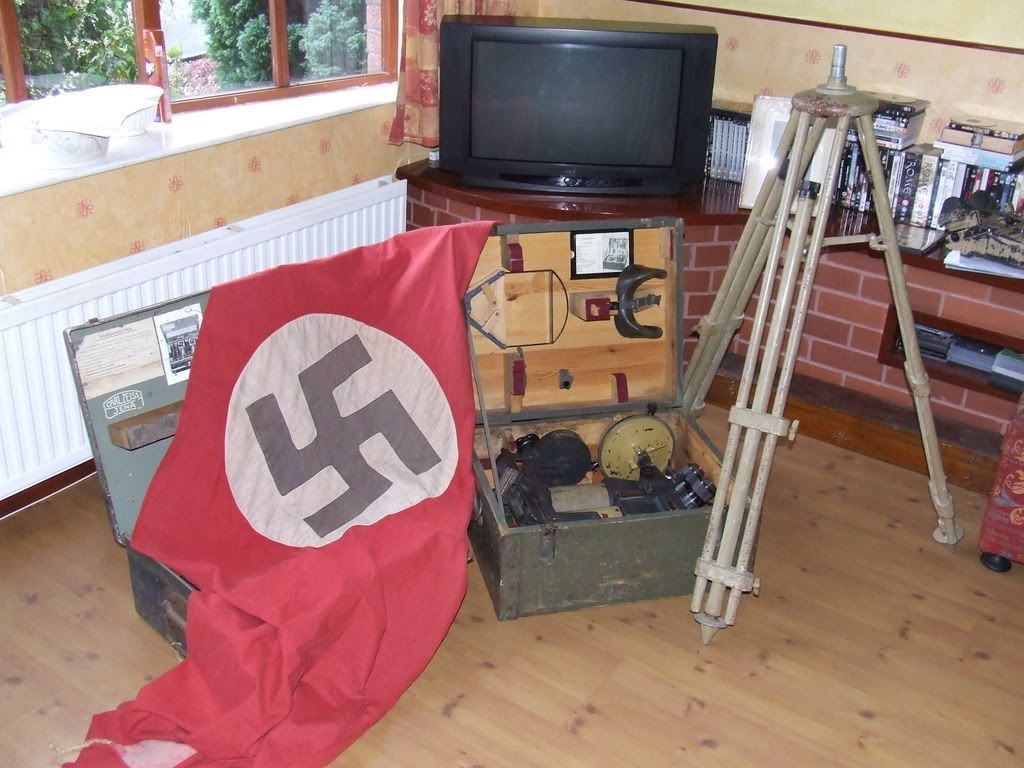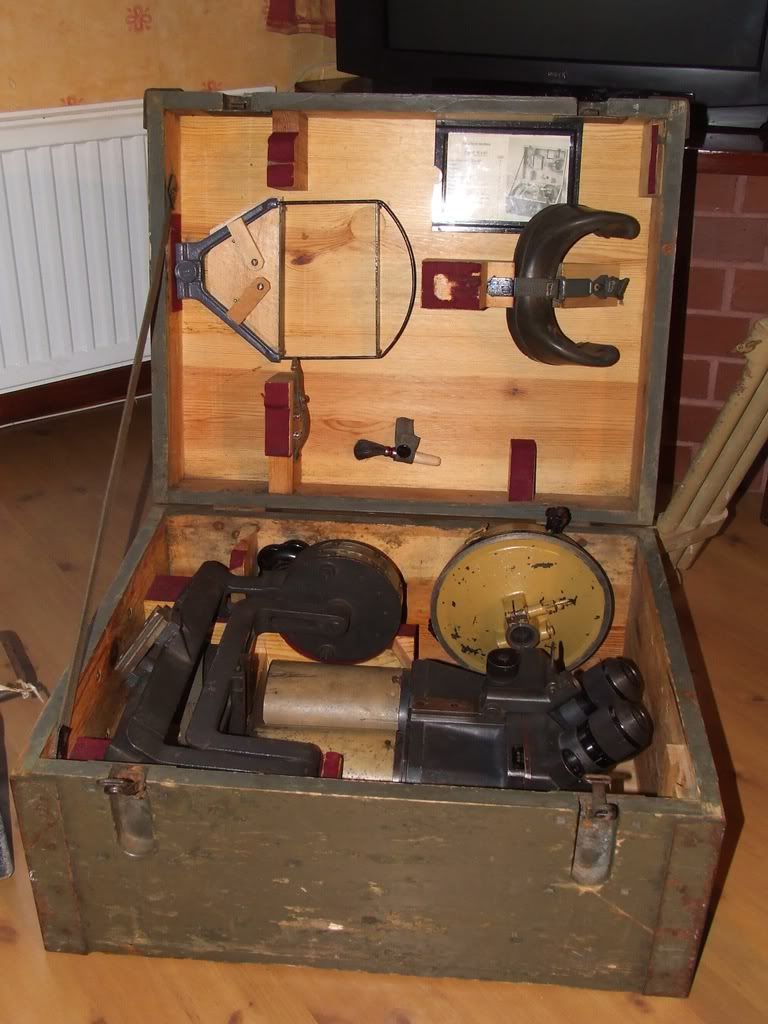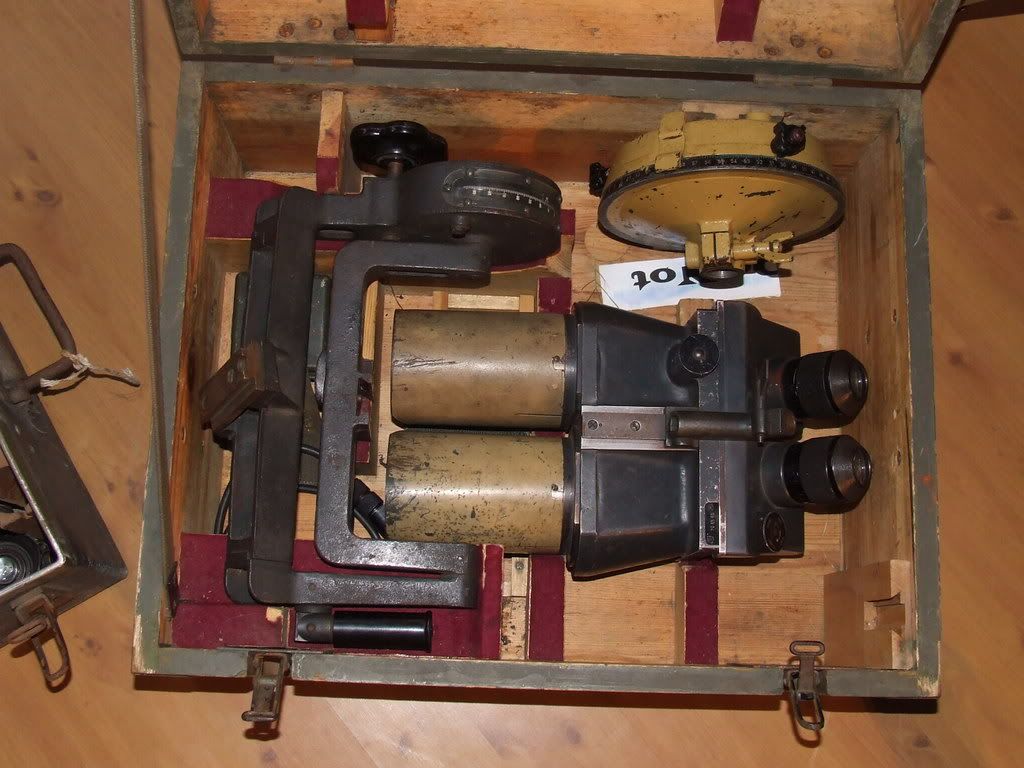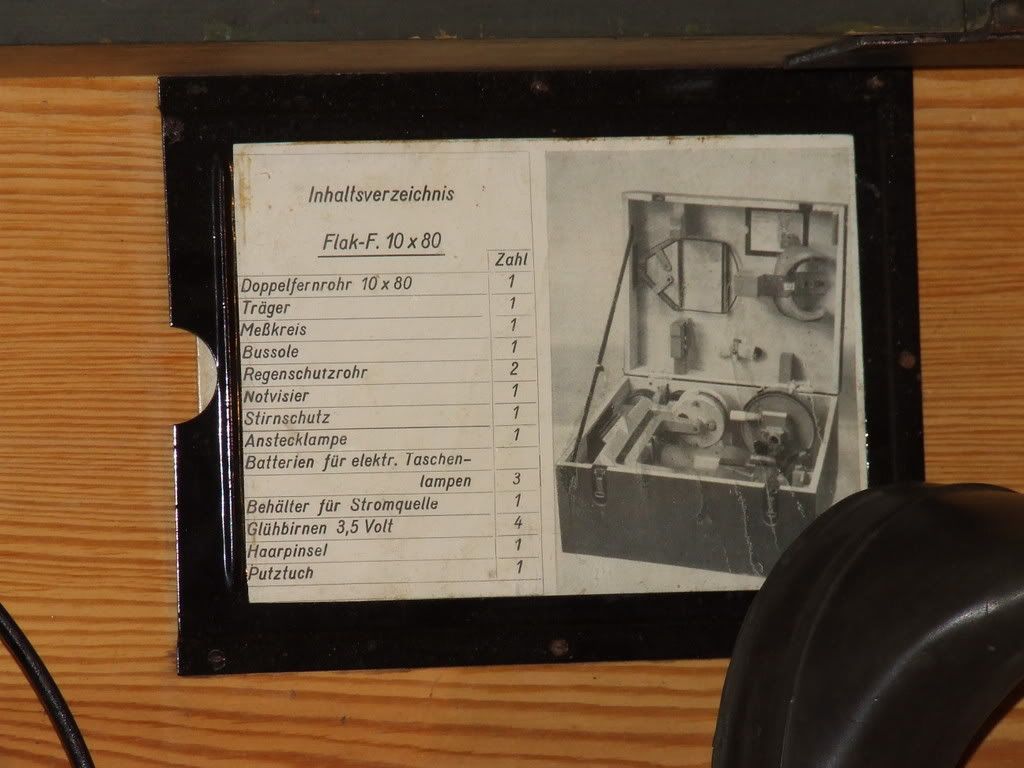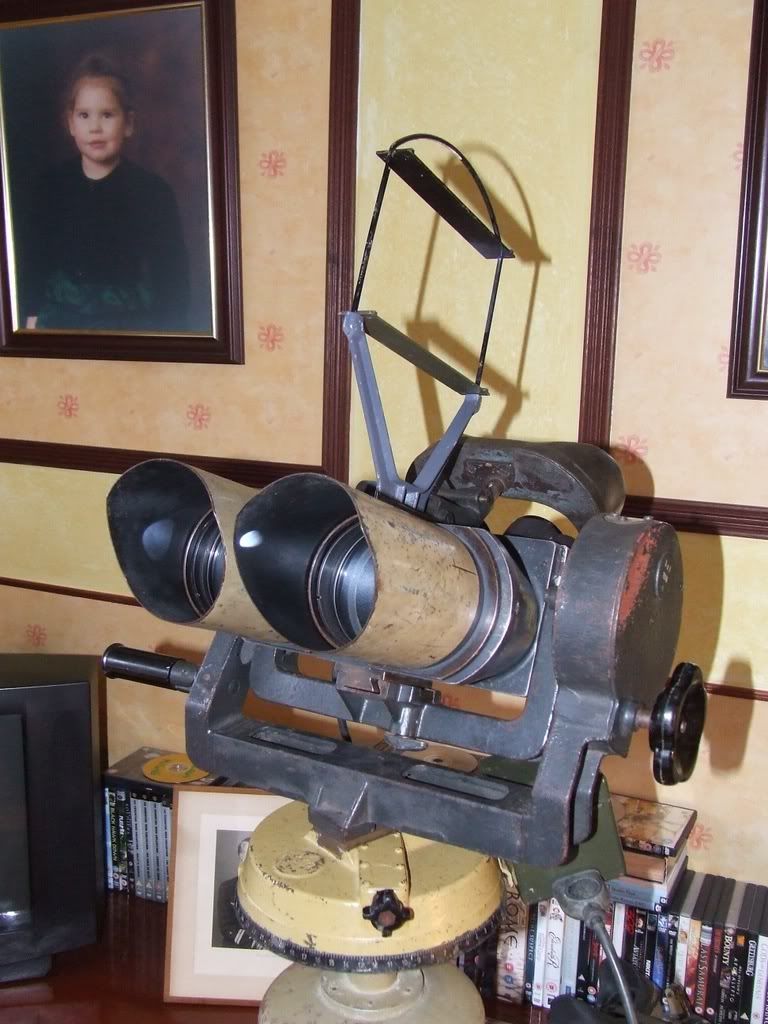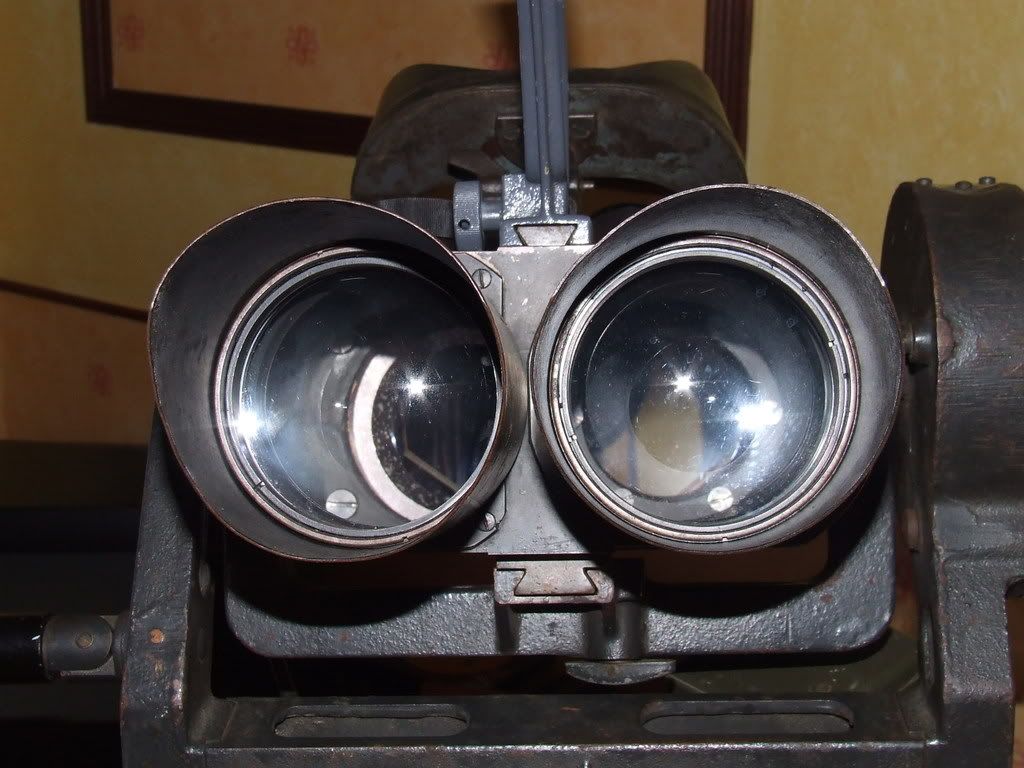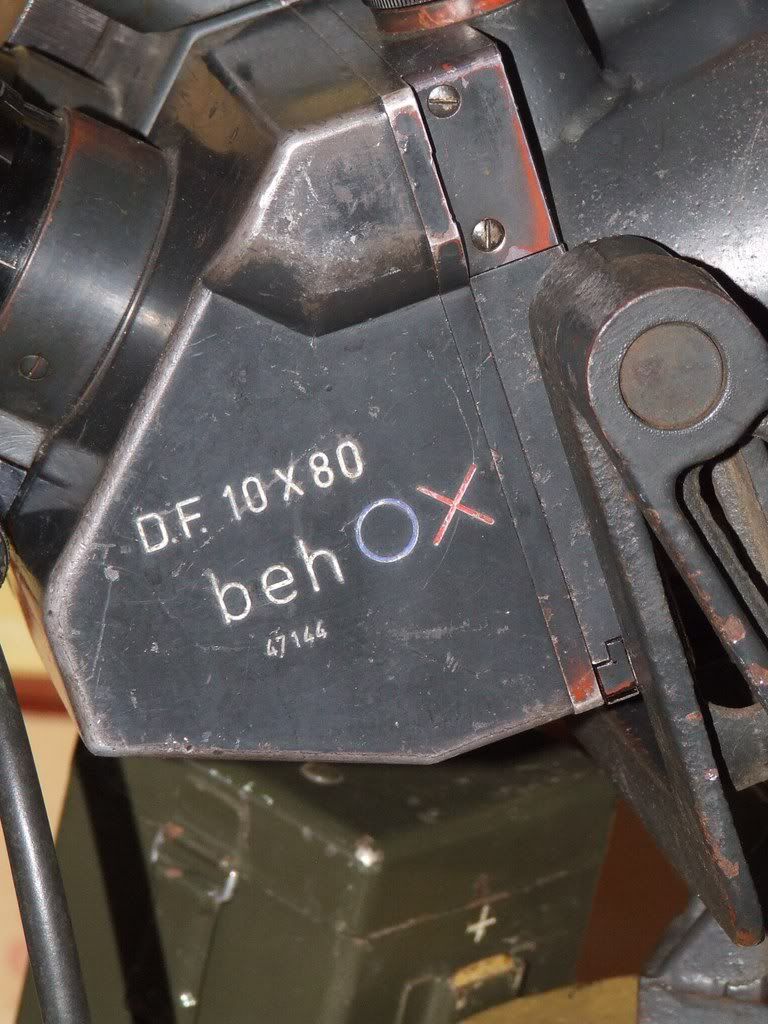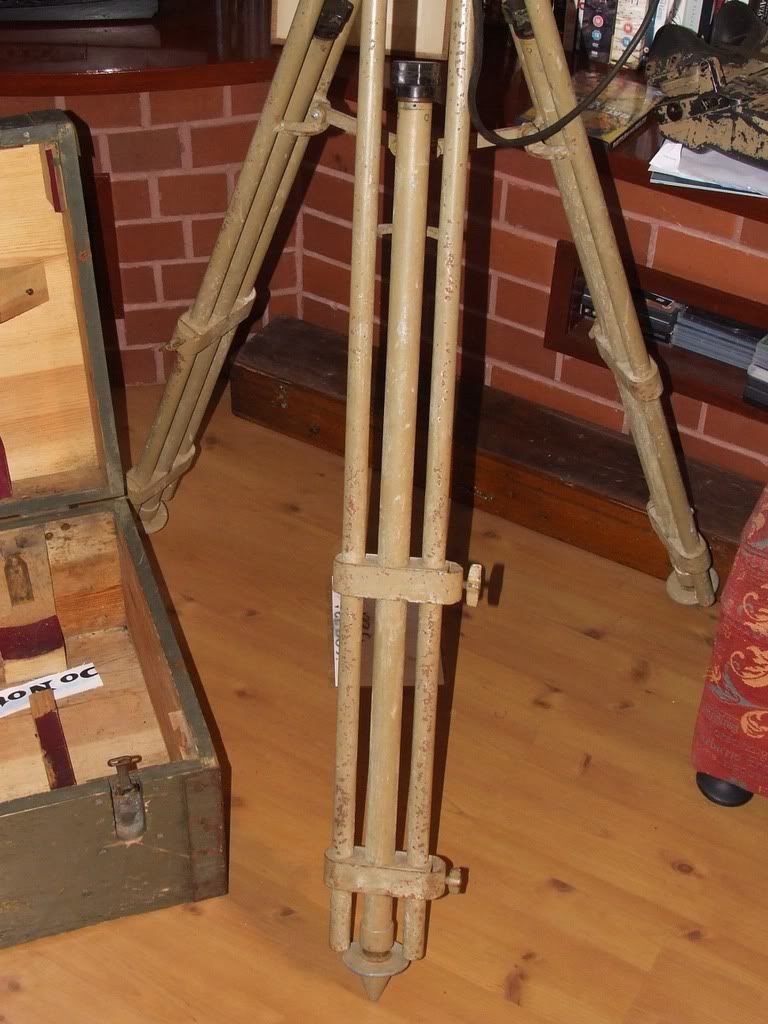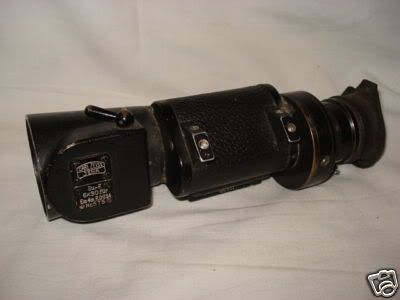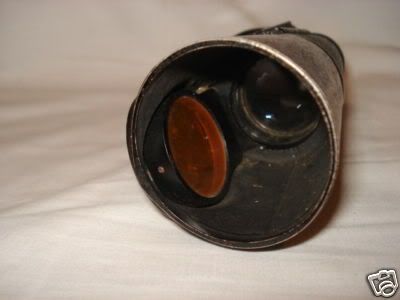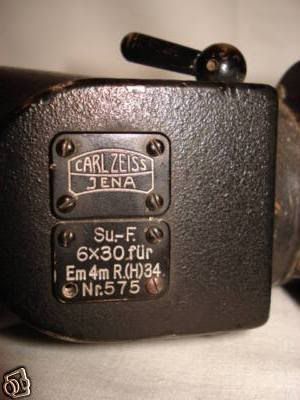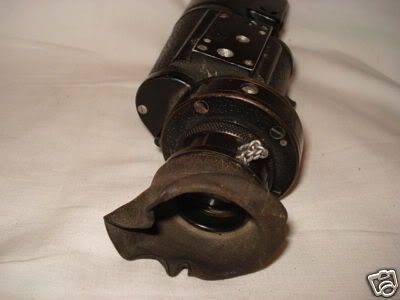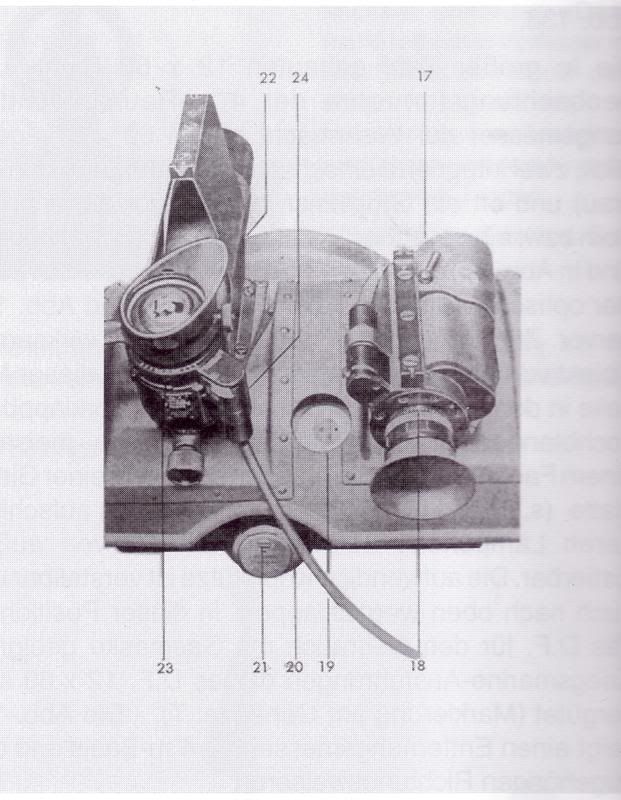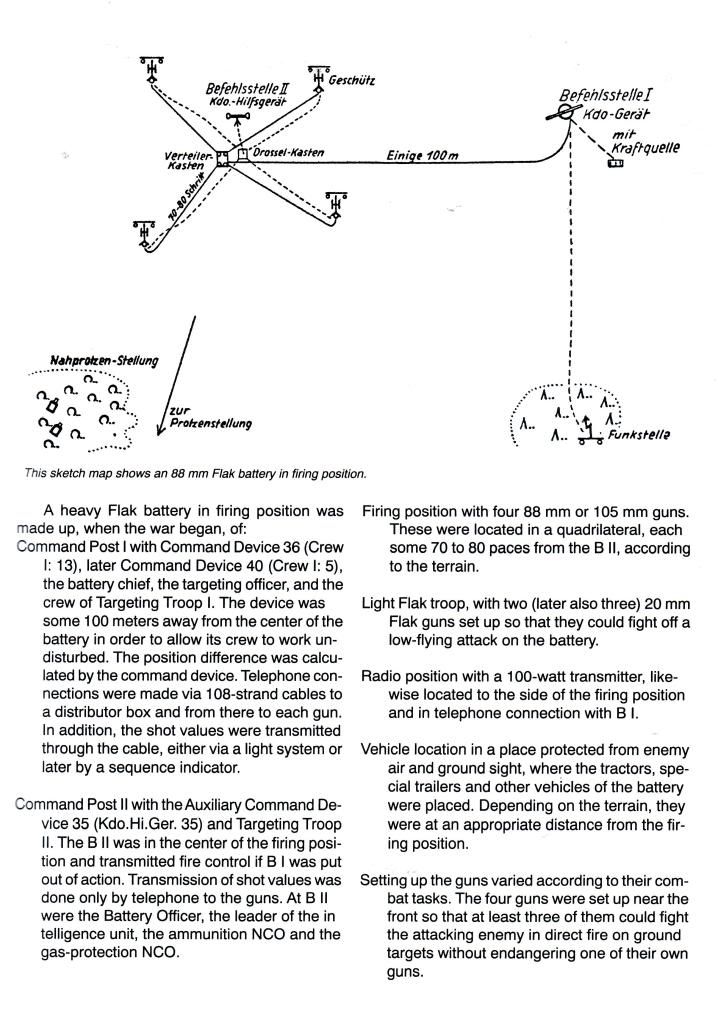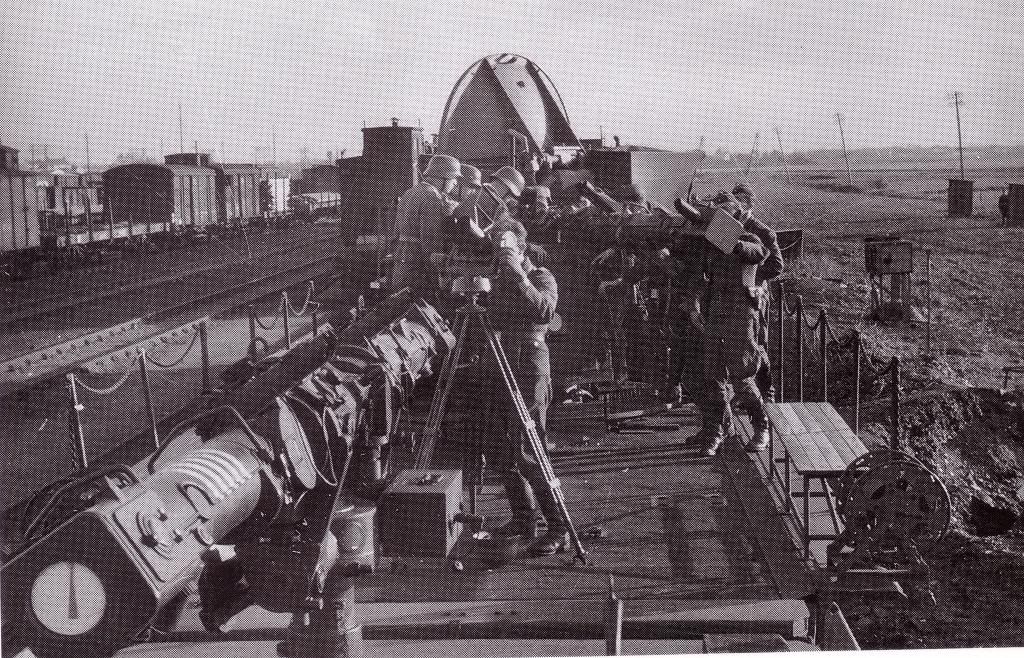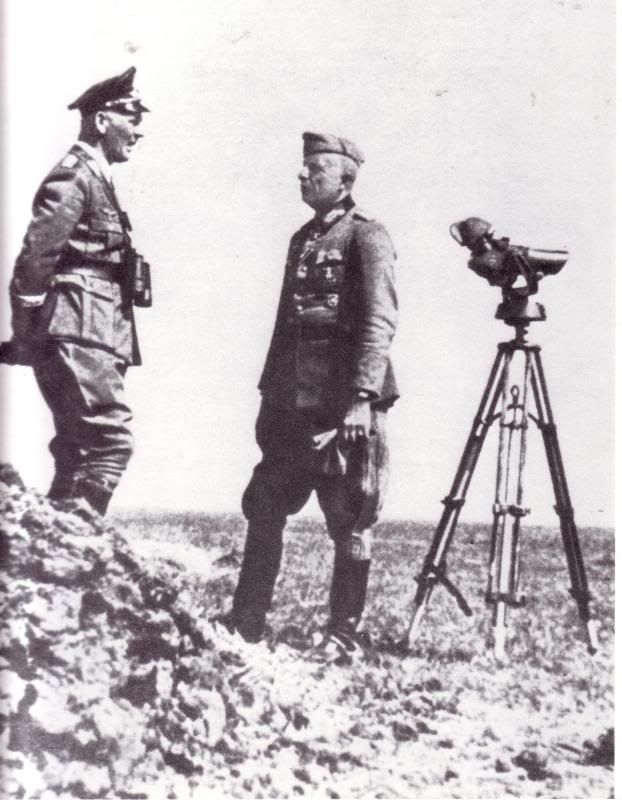(Although the same items were also employed by the Kriegsmarine , in a slightly altered state).
The 90 degree Richtfernrohr monocular sights are also by Zeiss (blc) - these items were used on a number of different devices for flak direction developed in the 1930's.
(Kdo.Ger models 34 to 38 ).
The transit case for the set- it comprises of 4 x 10x 45 90 degree monoculars and 2 x ,10 x 45 sights which are an utter bitch to find.
The box - I have seen two of these one which I have ( it came from Norway) and another in New Zealand, they don't appear often.
The wooden frame within the box holds each 10x45 on its base bracing them above and below on an individually padded inset -without the base plates the optics will not seat securely.
(This one rests on top of the transit box for a 10x80 Flakglas , the unit in it is complete and relates to these particular optics.)
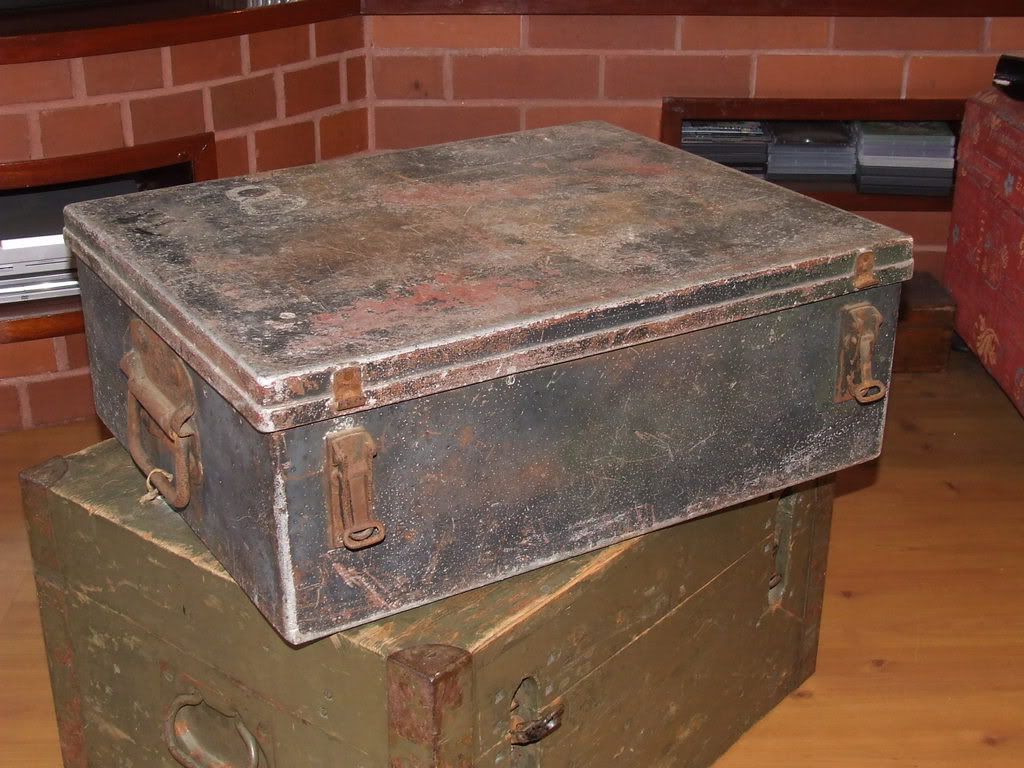
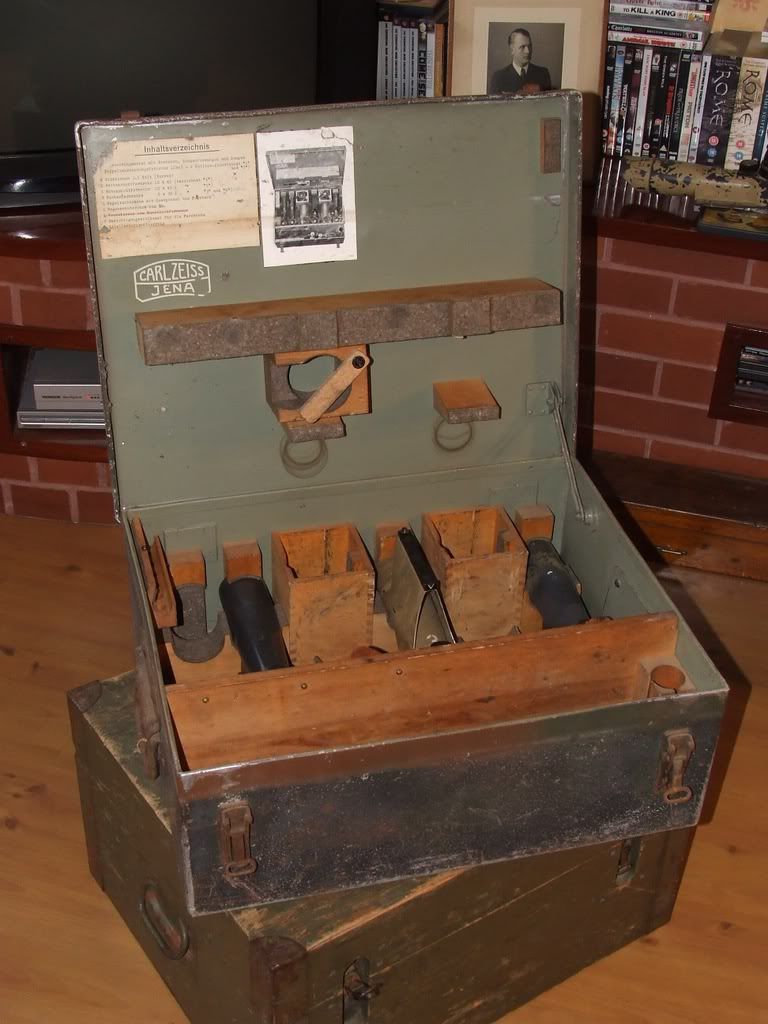
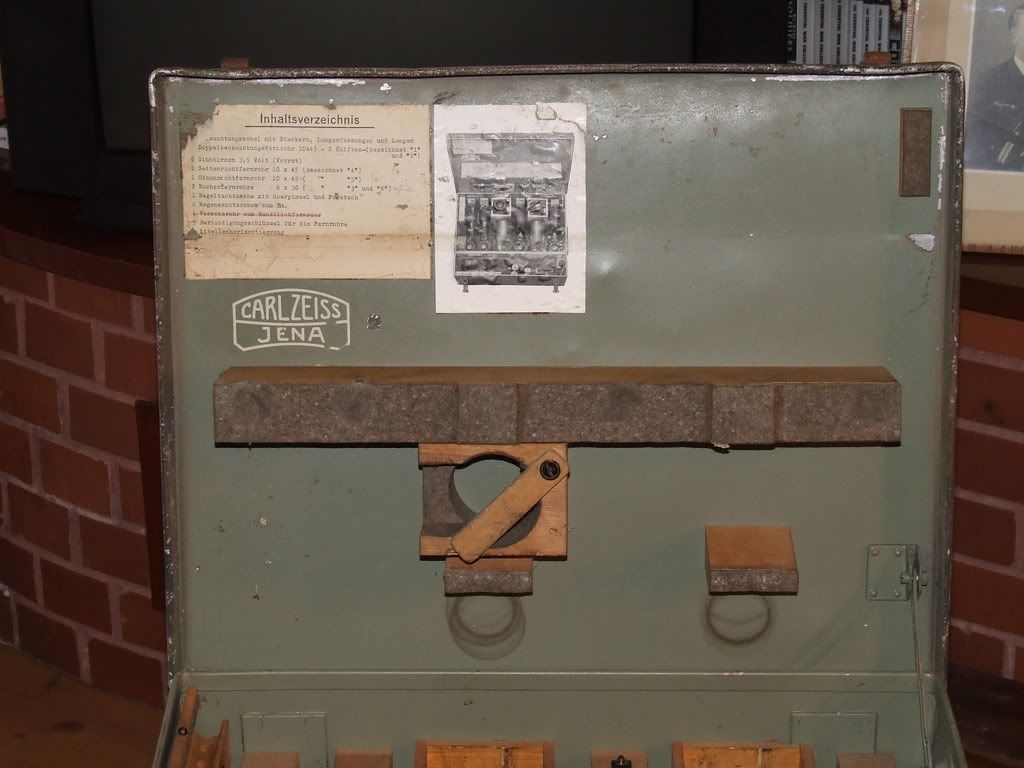
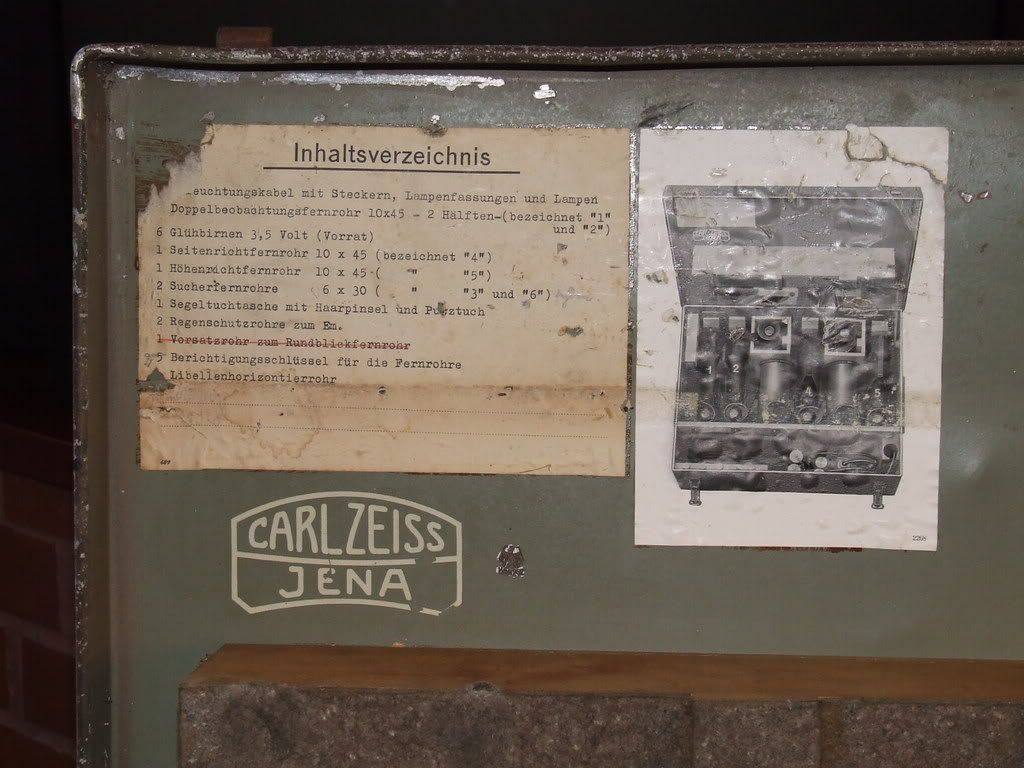
(Views of the tranist case for optical elements , including the makers mark and case inventory.)
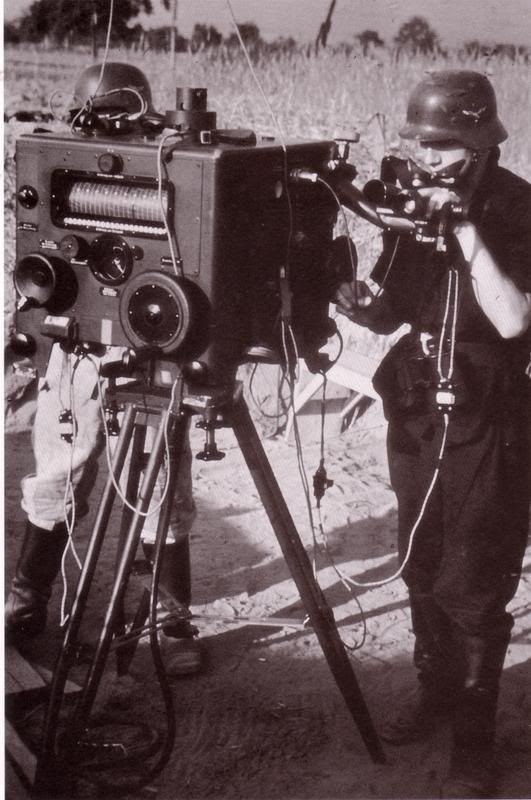

(Commonly on the Kommandohilfsgerat 35 ( Above) and the Kdo.Ger. 36 and 38. (A later models). ( Below).
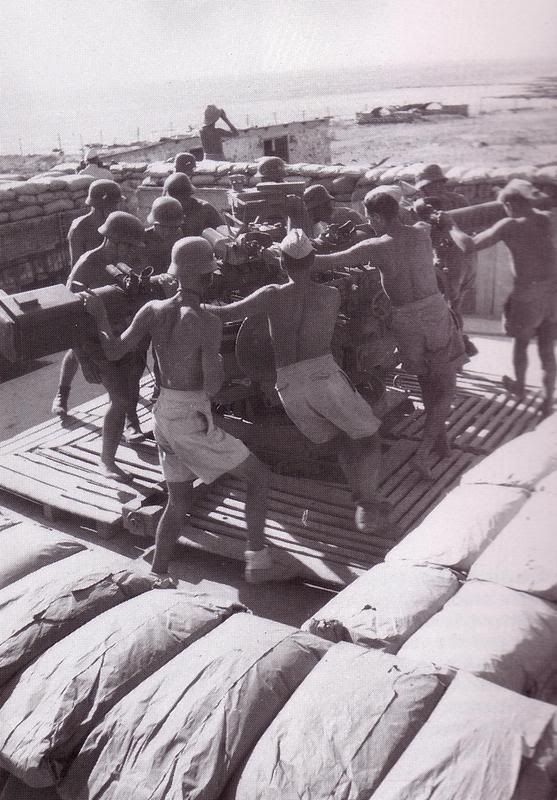
("36").
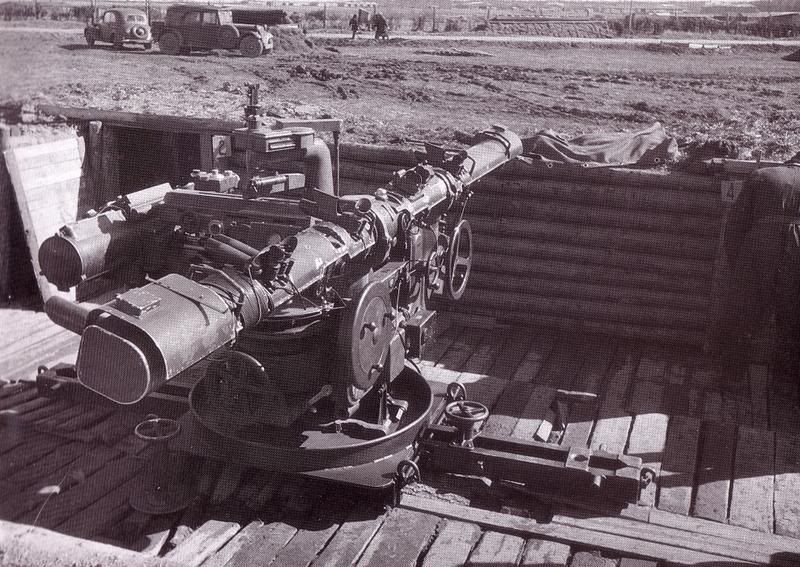
("38").
Below the 10x45's all Zeiss made , four examples ranging from complete (minus one eye cup to missing quicksight and eye cups).
The lens are not coated , the filter system , 3 -4 colours ranging from light grey to dark grey , green , to a deep blood red.
All have a ranging scale grid or cross hair sight in the ocular base, the illumination port will produce this "gold on black" in low light conditions if the light unit is switched on.
So often people have thrown away things they don't understand or think are not important leaving the bare optic , or worse still have wondered " how does it work" ?
This simpletons who have these thoughts then attempt to "see how it works" without thinking "how do I get inside it , do I have the right tools" - the fact that they "don't and I am going to have to say this have a fucking clue never crosses their mind.
God save us from "Boyscouts".
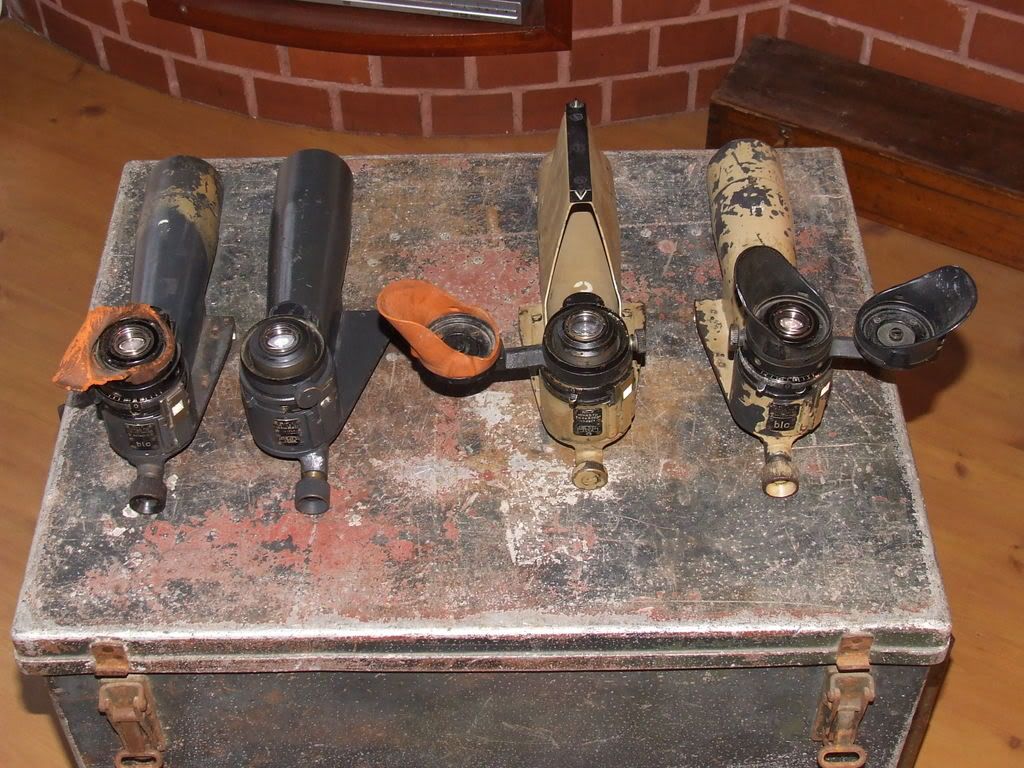
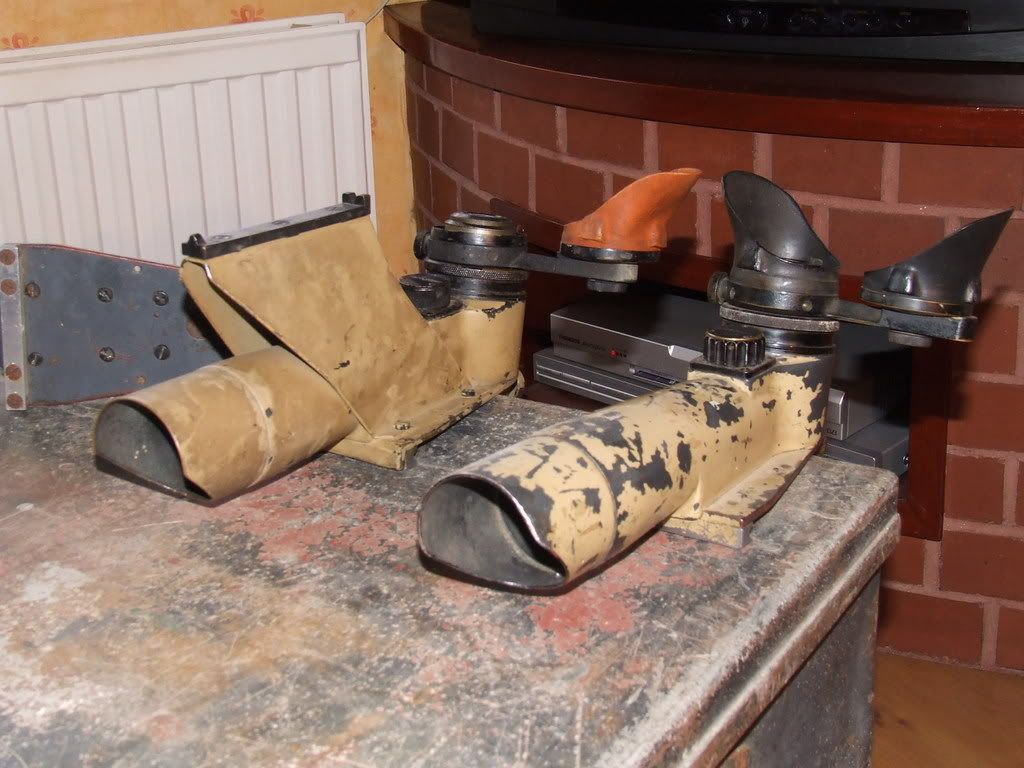
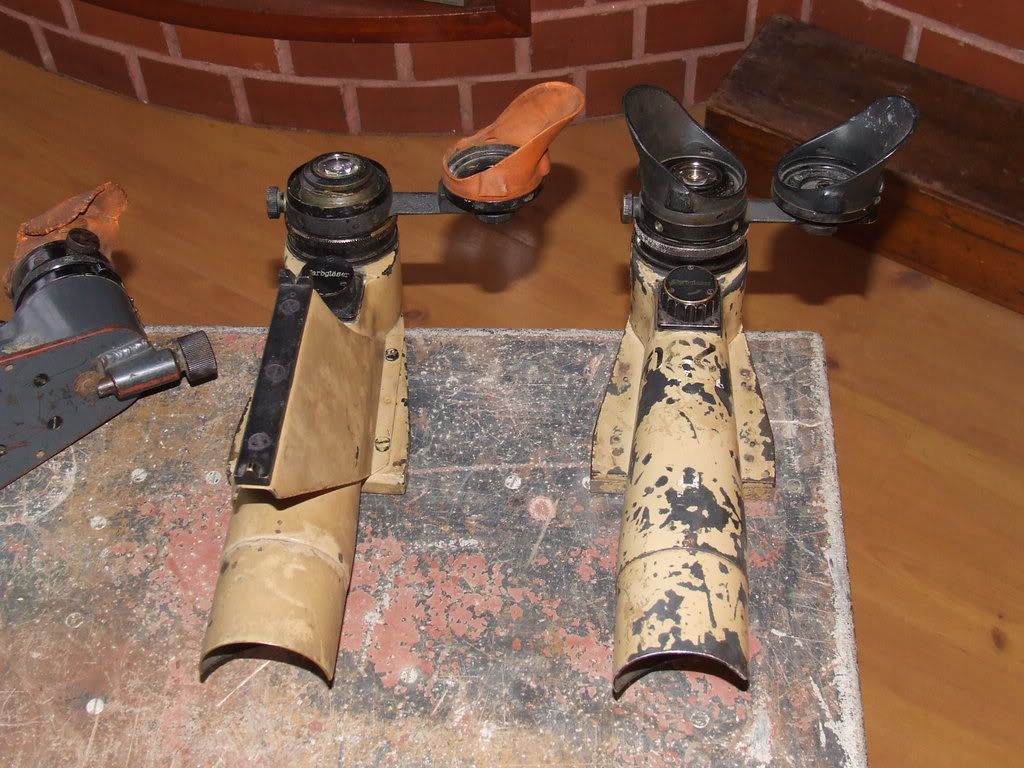
What the one on the right should look like - some took away the quicksight.
The "V" of the quicksight "glows in the dark". Nice
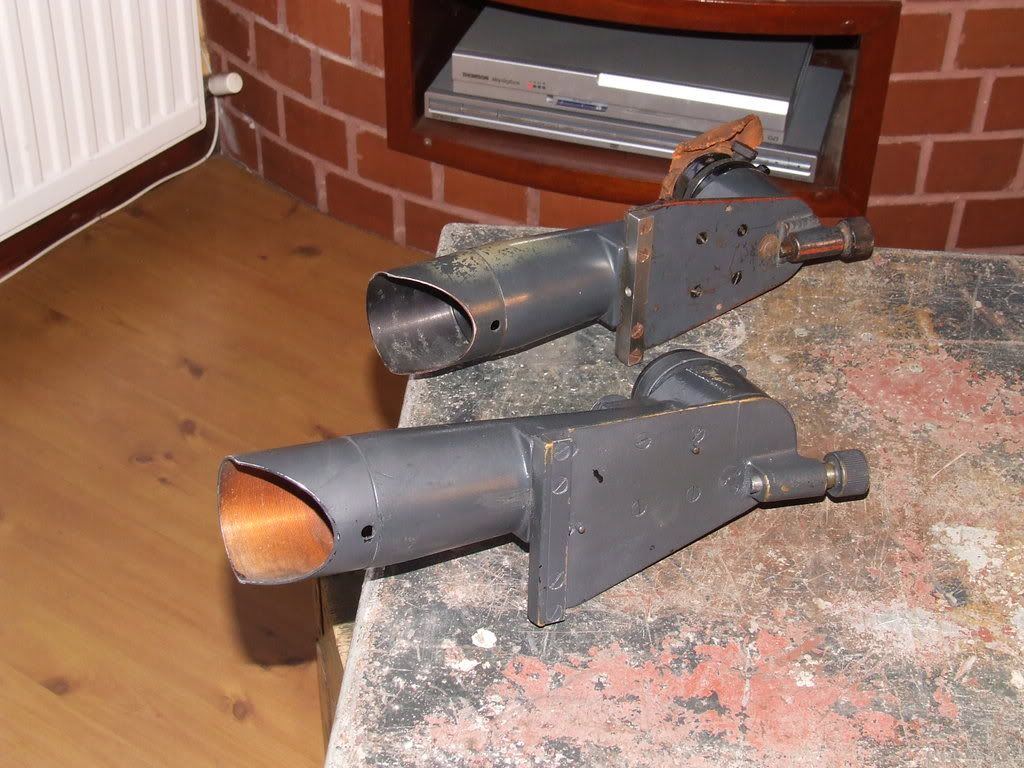
The base plates - this screwed directly on to the top of the range finder , the fitting at the end of the optic seating it securely.
Drainage point for water can be seen.
Some idiot decided to give one of these a coat of grey "to make it look nice" , really makes me angry - its like someone painting an MP -40, would you honestly do it in your right mind .
Worse still a previous owner also gave a "12x60" a coat of "battleship grey as well.
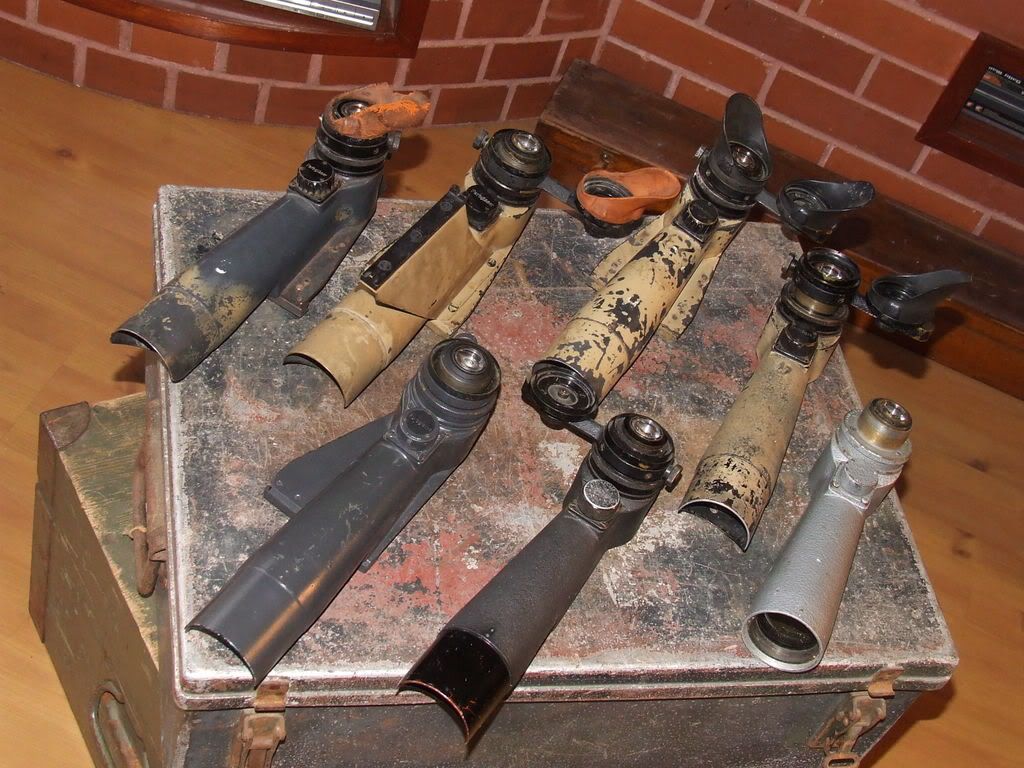
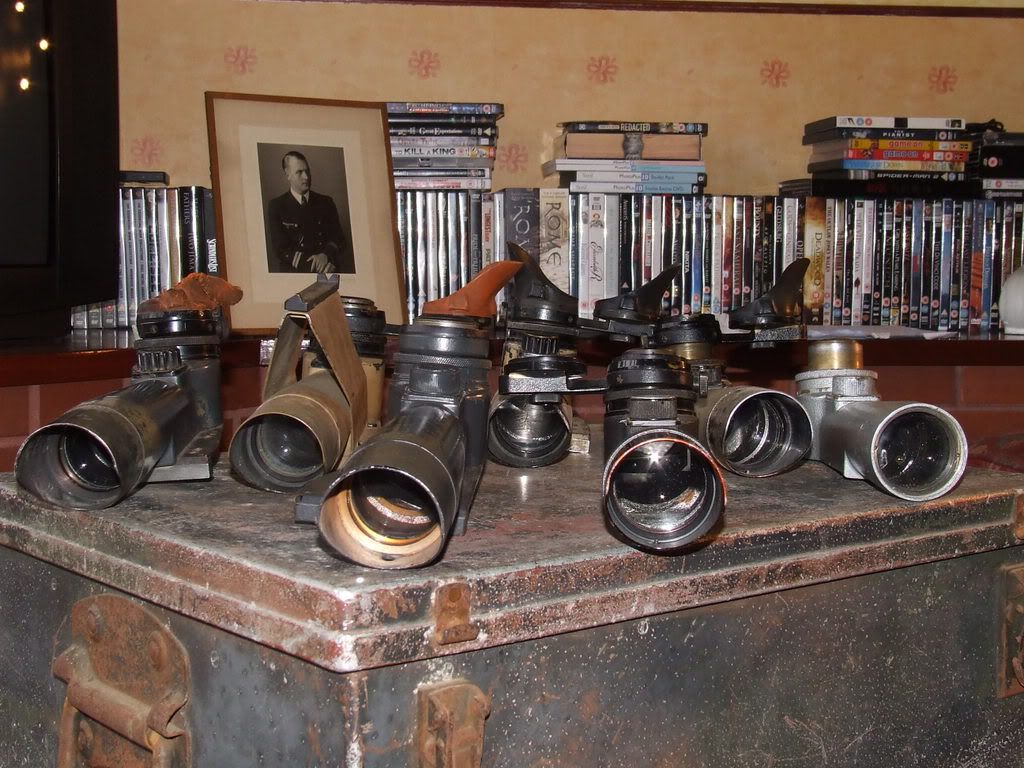
A number of sights some will have to go to sale - cop an eye of the one covered in "hammerite" - why do people insist on doing things like this - would an MG-42 in silver hammerite look good ?
This is the annoyance which I feel - its the only way I can explain it.
Not so long ago a number of 10x 50 flakglas were sold from Norway - the whole units had been "hammerited" in a ""nice mint green" - binoculars , discs , cradles - insanity !
All these devices are engineered to very high specifications , lens are all coated , an internal filter system is in situ and ranging grids or aiming sights are part of the optics.
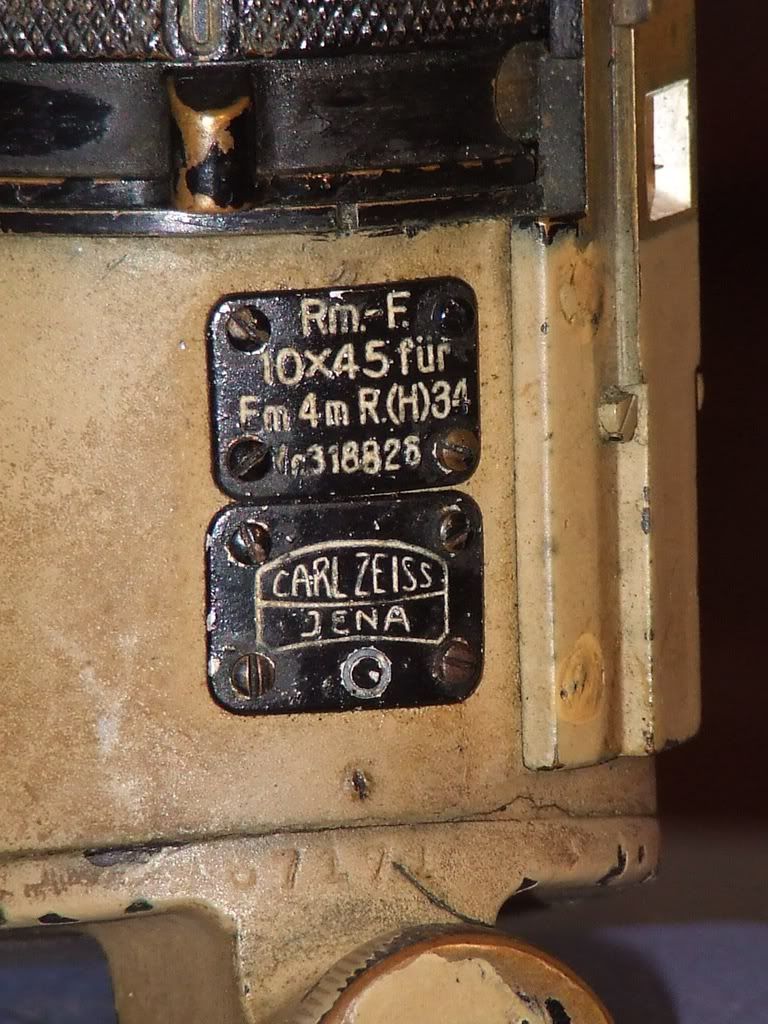
Makers plates , size and serial number of the item , on the right the illumination port - takes the same universal cable which works on all German optics.
Obtaining complete examples is not easy and mint examples is I fear impossible - in fact to put it in a nut shell "it would put your fu**ing head away - often base plates have been removed , the hooded quicksights removed , rubber eye cups more often than not missing or badly degraded , all something of a nightmare to be honest.
Having said that the "view is worth it" , they are very well made and at one time would have been an essential part of gun laying and directing.
It goes without saying the the range finding units were close to the guns (but not too close) and all had to be carefully laid out and arranged so bearings , direction , etc when passed were meaningful to all concerned.
The items shown are amongest the best optical devices made - the 12x60 Fertigungskennzeichen is an outstanding piece of optical engineering , to produce the same item today would be extremely expensive.
The 12x60 device was designed for the Kdo.Gr.40 , the 4 meter range finder.
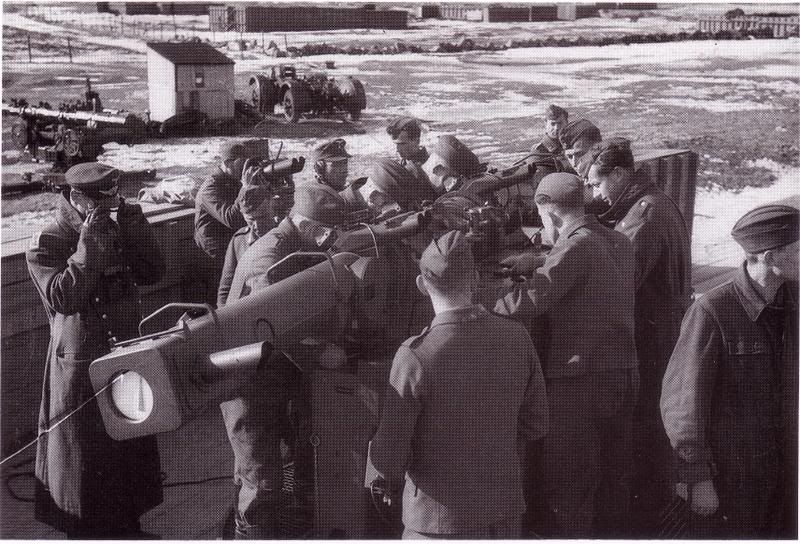
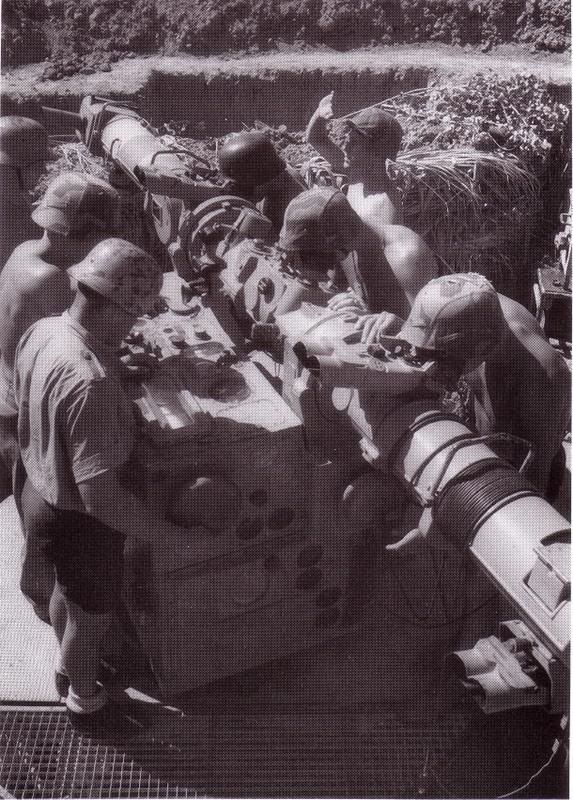
The 12x60 blc the end prodct in terms of design of what has been seen before although a larger 25x100 example was produced.
The 12x60 is one of the superior optical designs to come from Zeiss.
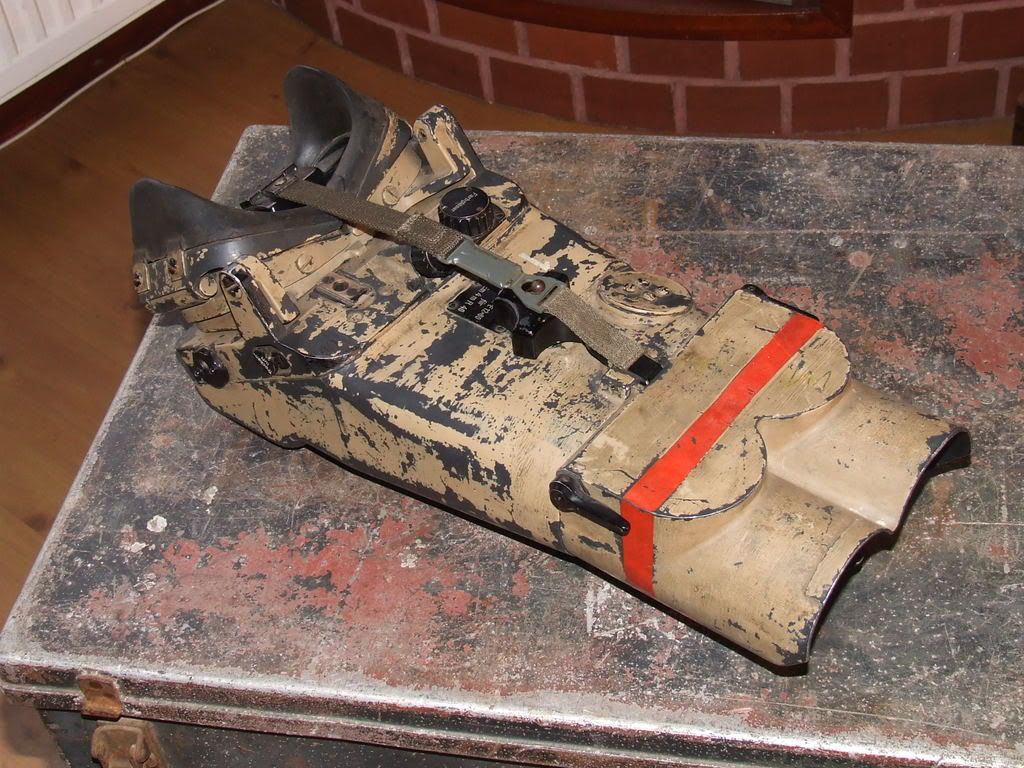
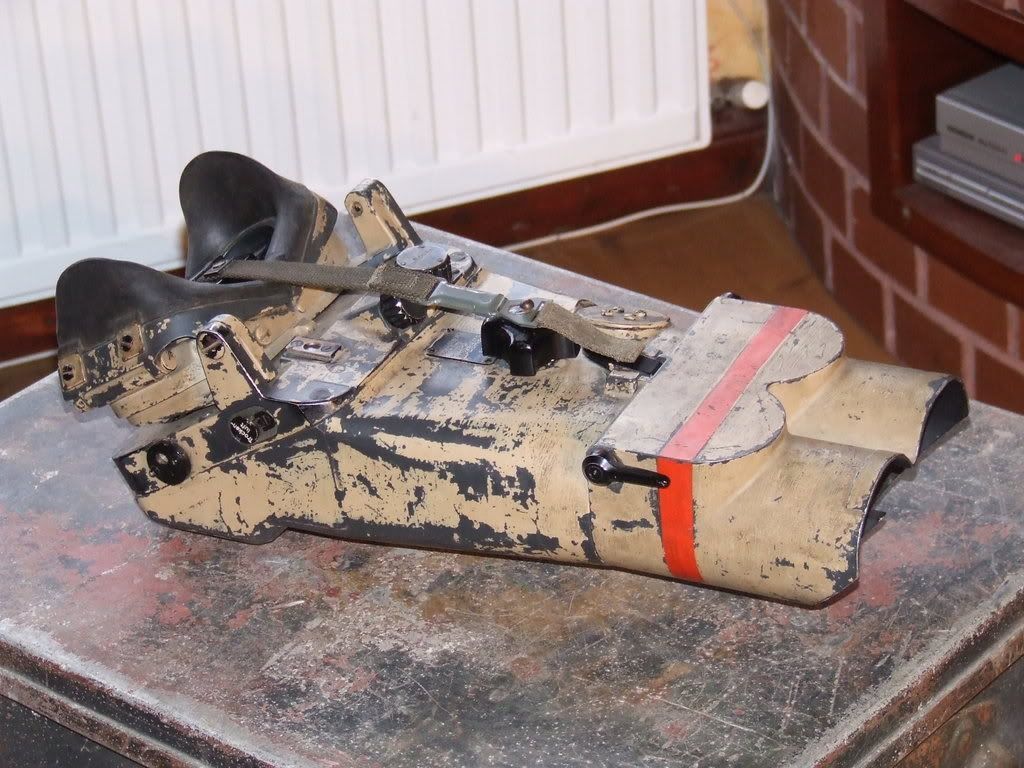
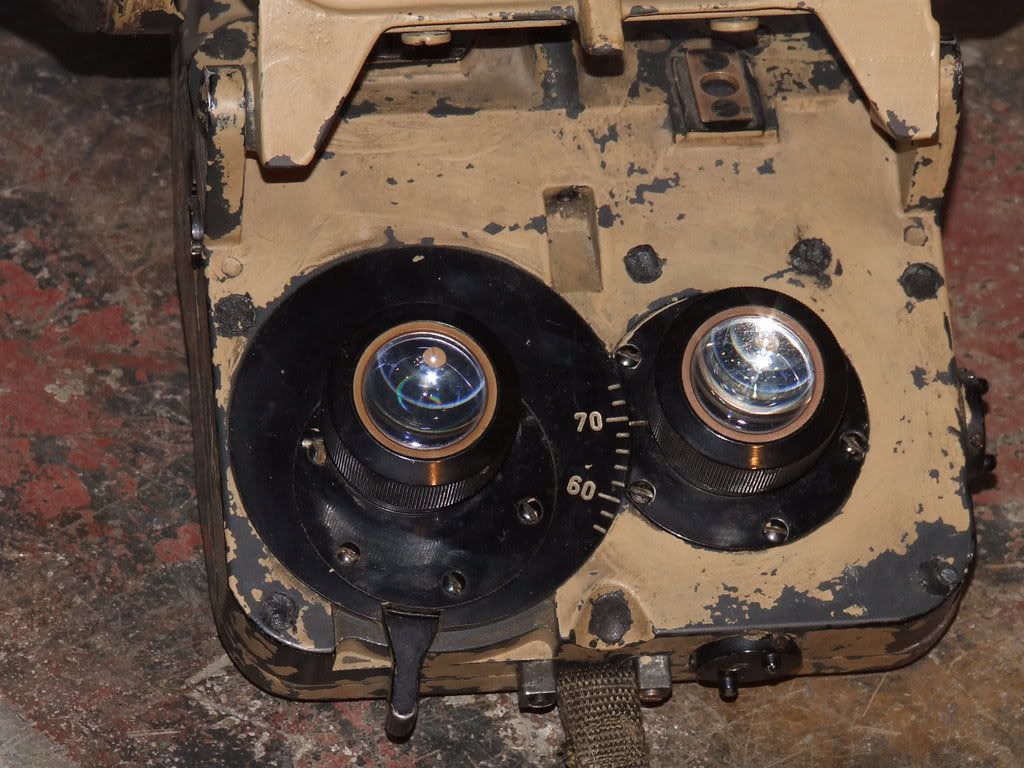
The oculars with the brow pad raised - easy for cleaning and adjuctment of in the left ocular - the smaller moved the whole ocular to the left or right as required.
Bakalite benutzer / rain guard attached to the mounting screw which locks the binocular to the rangefinder.
The red bar , current thinking was that it is present to help orientate users in how to place the item in its transit case.
Eleven huge screws hold this unit in place and when removed they allow you right into the prisms which are enermous held in two large cages .
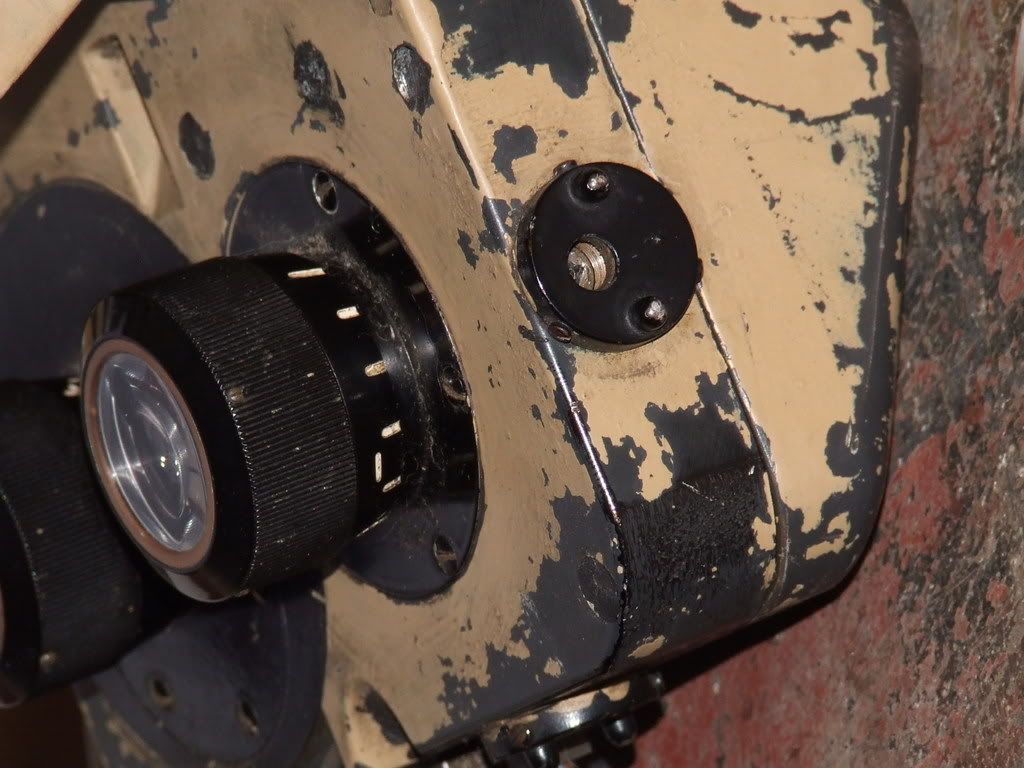
At three o'clock and six o'clock to the right ocular are two port , into which a specialist tool allows the graticule or ranging grid to be manipulated to set it dead centre for the individual user.
At the top right - the standard illumination post , on some sets a metal "V" quicksight or a small optical quicksight can be mounted, the latter is hard to get and is extremely expensive.

The desiccator cells one on each side , spring loaded to hold the units in place.
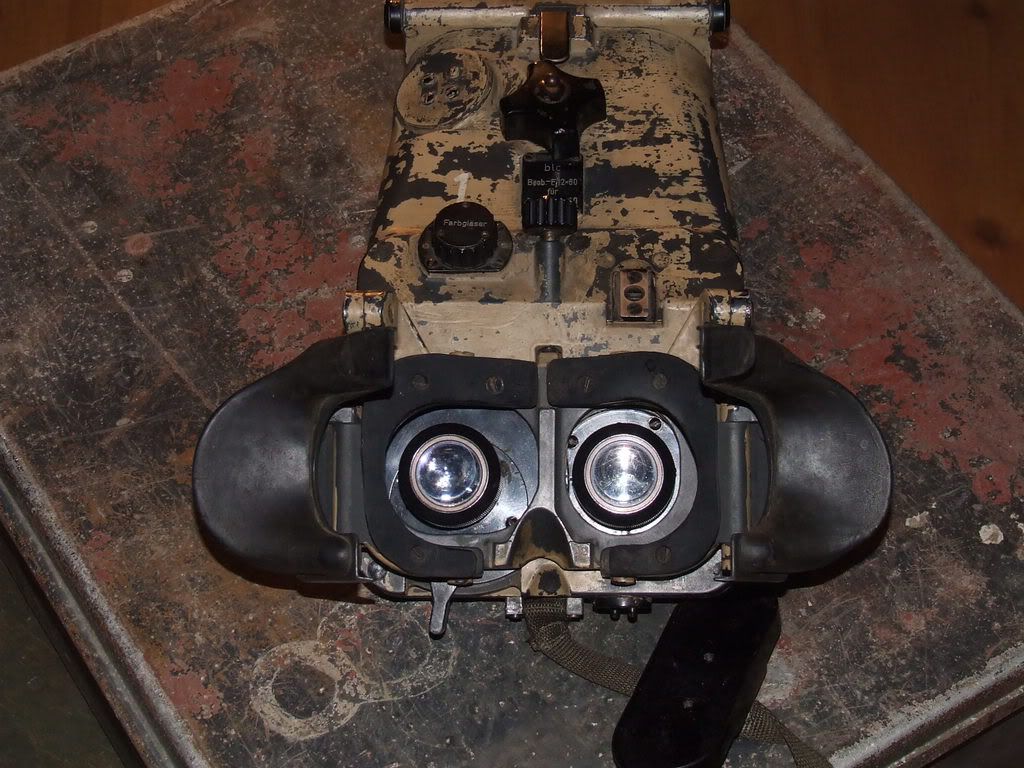
Brow pad up - on the left directly above the left ocular stand the "Ferbglasser" selector - a range of coloured filters can be selected , four in this set.
The centre angled knob - this will raise or lower the browpad depending on what eye relief the user required and illumination port to the right.
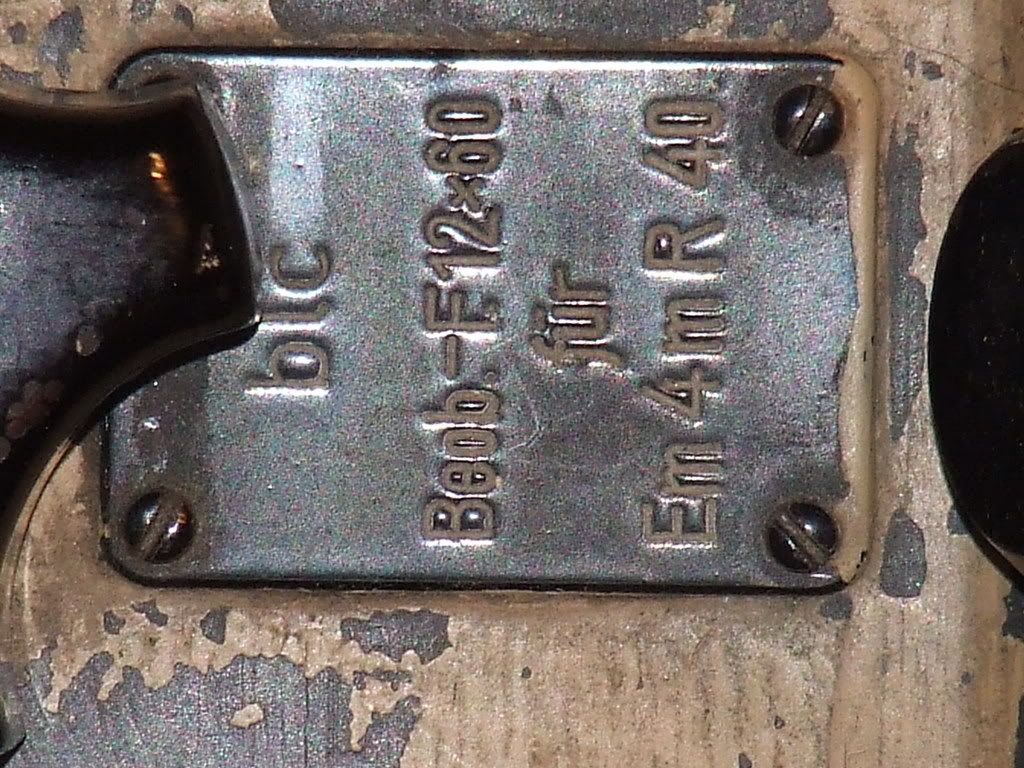
The idenficication plate - identifying the make model and what unit it was designed for.
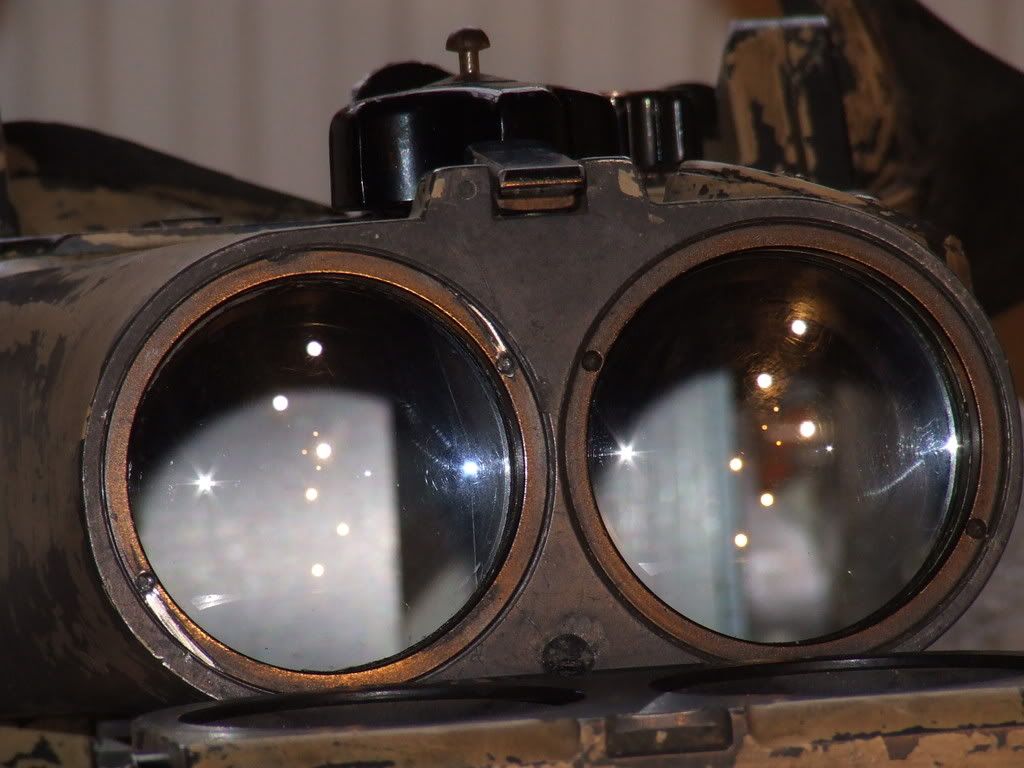
The 60mm objectives coated and boy do they gather the light.
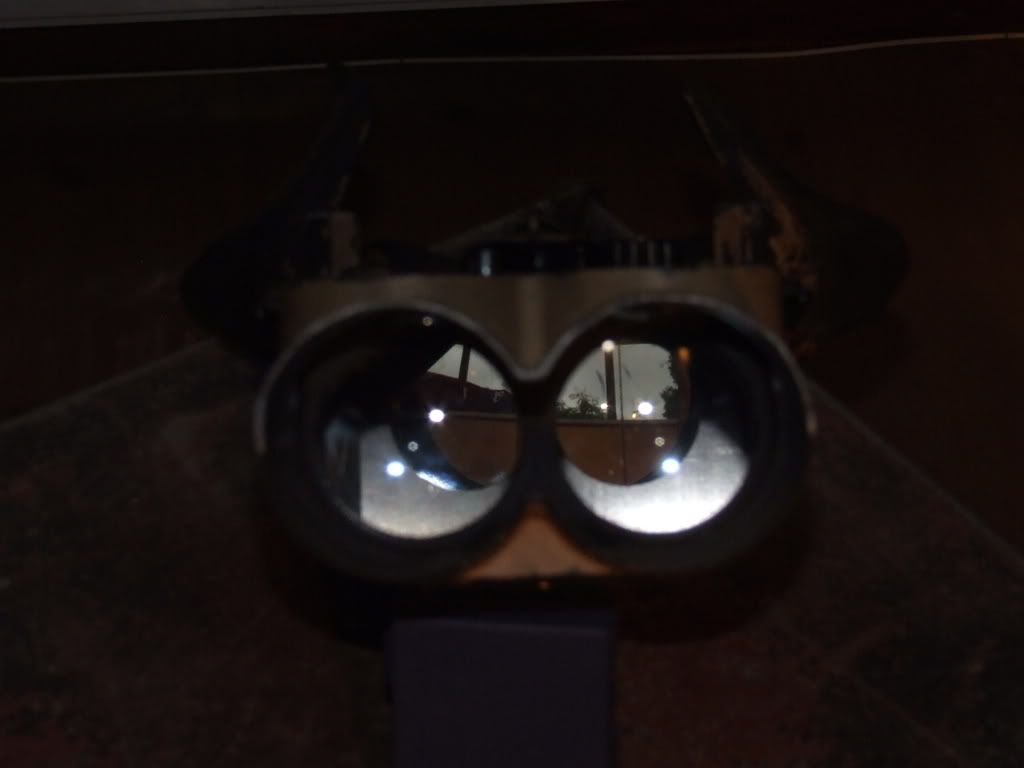
Fully open.
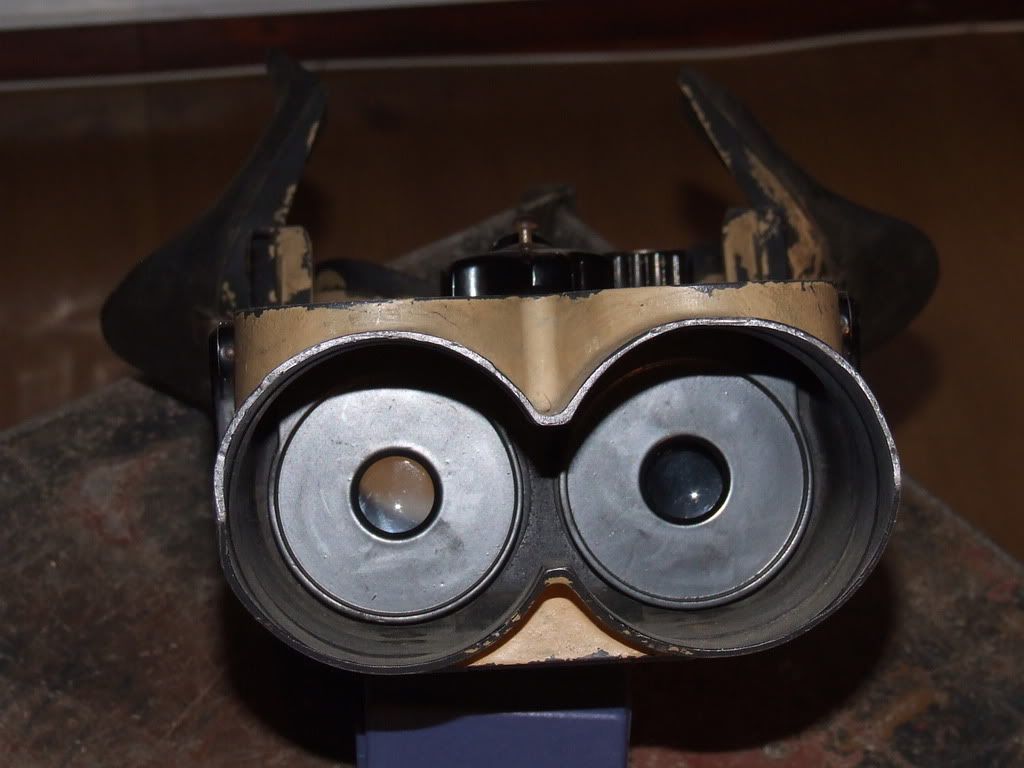
Objectives closed down.
This is done via the small black levers on each side of the lens hood adjacent to the red bar.
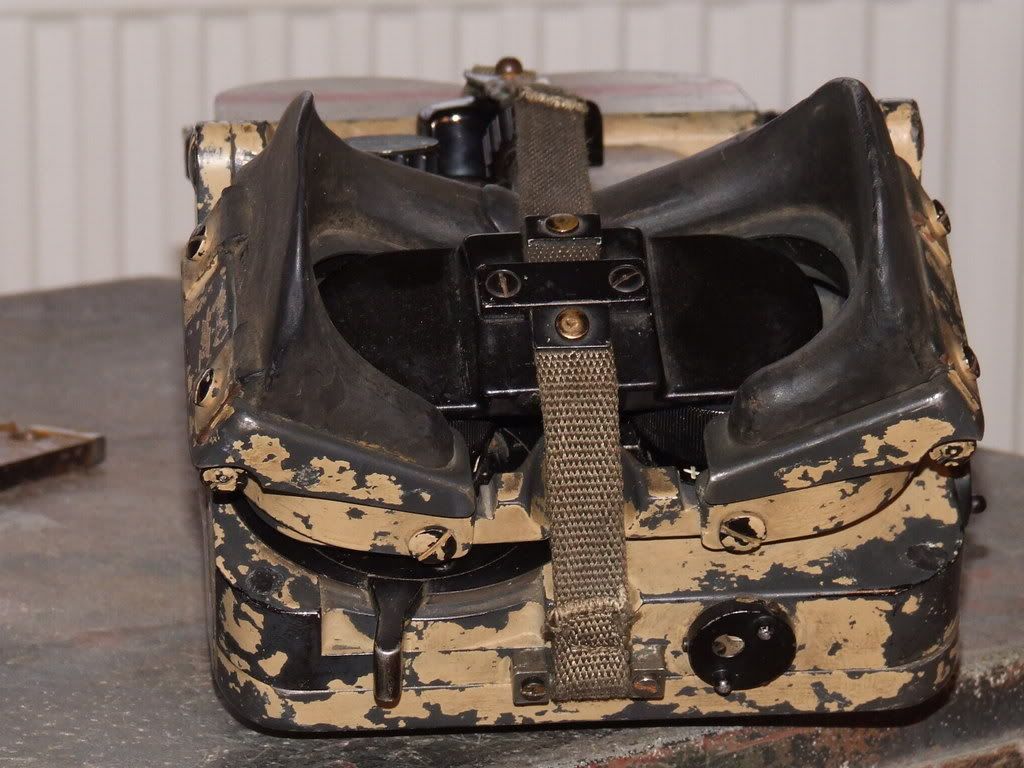
View from the rear benutzer in situ , graticule adjustment ports visible.
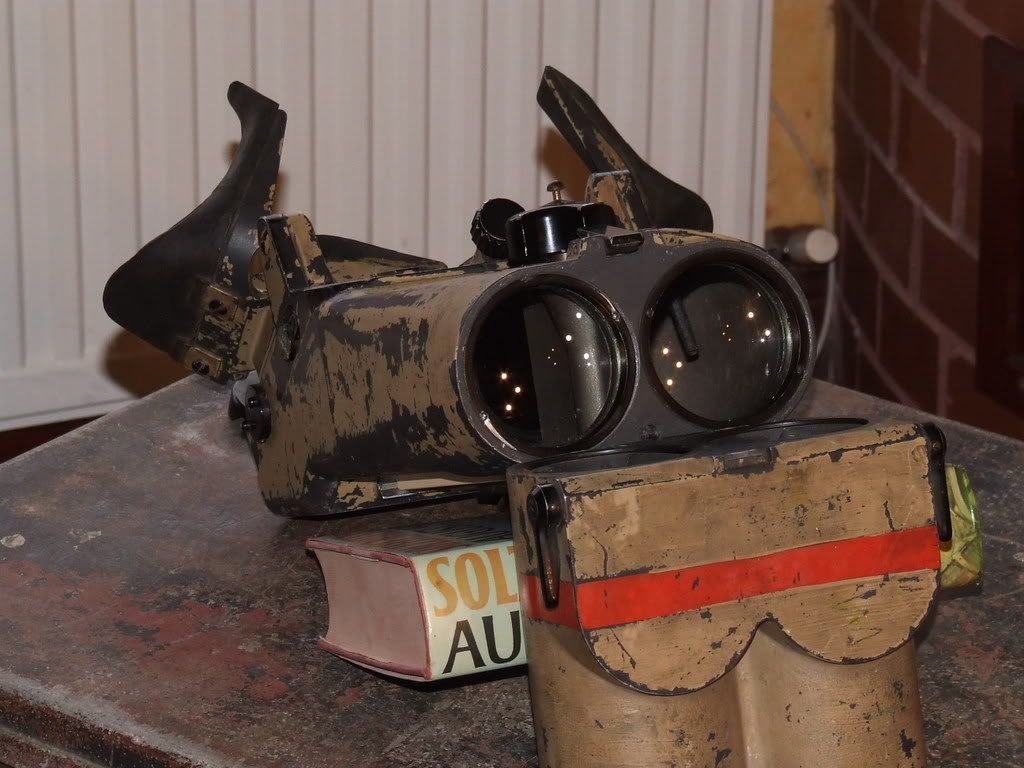
Brow pad raised and lens hood dropped , the actual binocular elemst is compact and the unit is quite light .
The body is cast ally , the "Afrika Korp" paint - well its not is it , biut that's how some describe it , underneath the standard grey colour , looks tatty but I would not have her any other way.
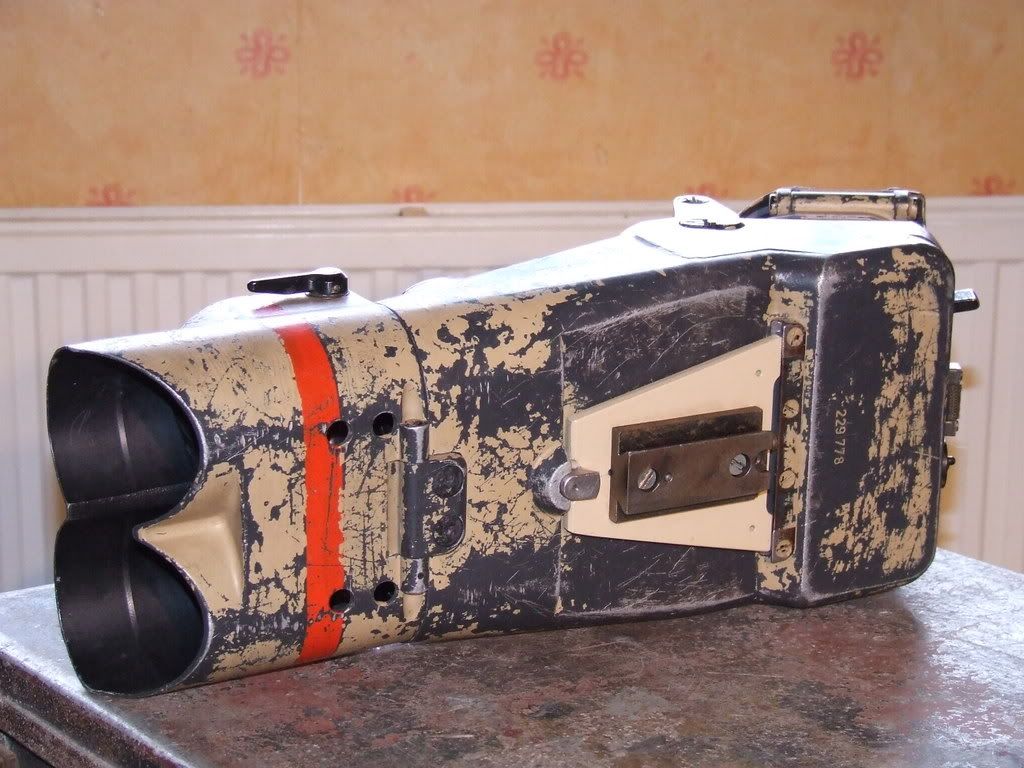
The base of the binocular , the plate shown is a conversion job to allow it to be mounted on the 10x80 cradle - on this mount you have a very fluent and natural movement.
The mounting block is that of the 10x80 flakglas, the serial number of the binocular is shown.
Four holes are for drainage of water inadverse conditions.
The FOV is quite narrow but the detailk surrendered is really amazing - if you look at the moon vias this baby it will never seem quite the same again , Saturn's rings - easy with this one and the moons to boot.
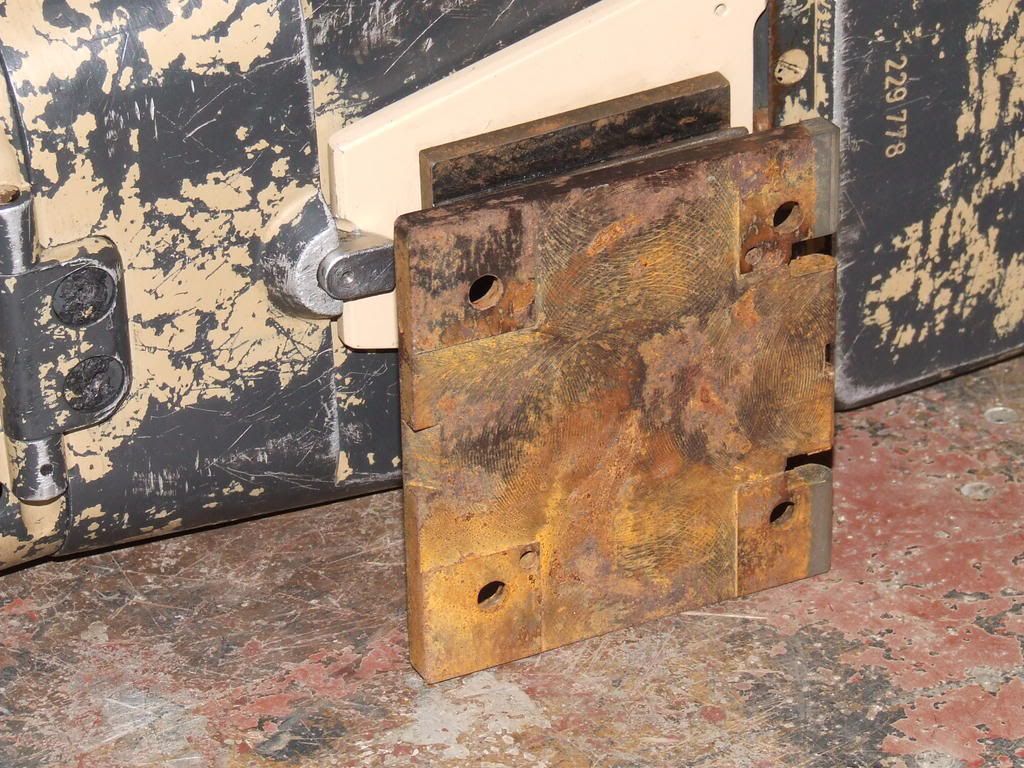
The mount plate for the unit.
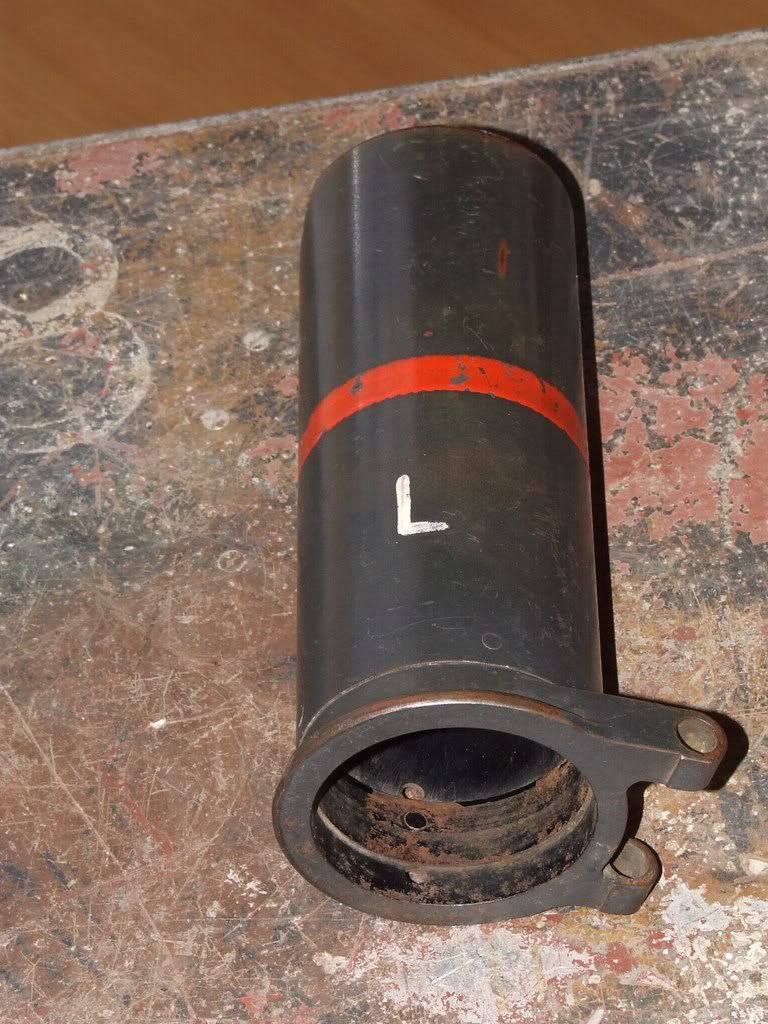
A lens cover for the left side objectyive - 4 metre RF - our German cousins had a thing about red lines . This one I got at Ciney.

More red lines !
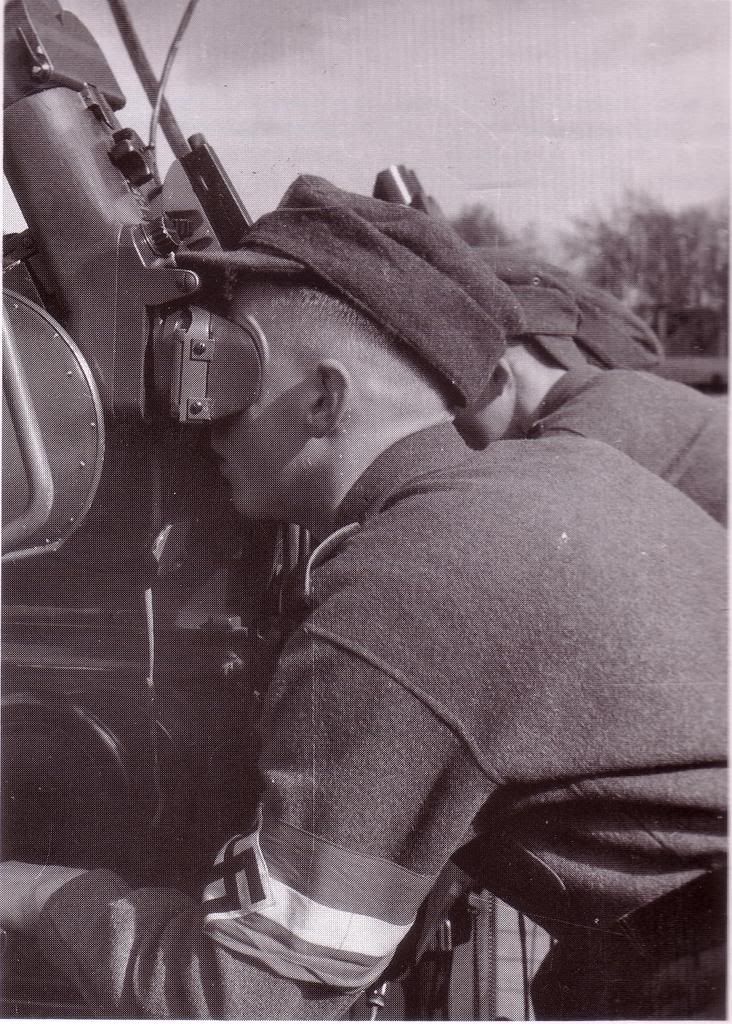
A last one which captures well the at times uncomfortable attitude / posture which using this rangefinder put people into , thank you God for the lads of the Hitler youth who would spare old men like me the joys of chronic lumbar pain.
On this one - no drying ports .
The quicksight is shown and the illunmination leads - the length of the rangefinder wasa mass of electrical leads and linkages - sadly they are now impossible to obatin and I hold little chance of getting my hands on any .
In the series of photos used ( from Muller's "Sound Locators, Fire Control Sysems and Searchlights of The German Heavy Flak Uniyts" 1939-1945" (Schiffer , 1998.) ) , you may have seen a number of 10x80 flakglas also mounted for use.
How did they do this , "I don't have a clue" but if anyone can tell me please do !
( "I is here to learn" !)





